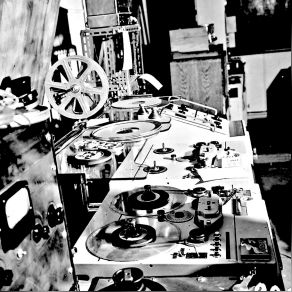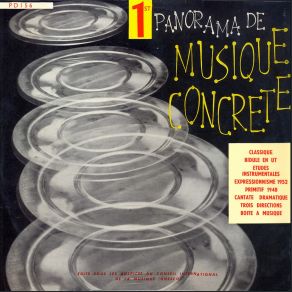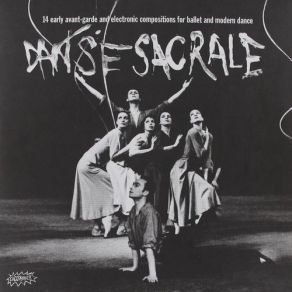Pierre Henry
Wikimp3 information about the music of Pierre Henry. On our website we have 56 albums and 20 collections of artist Pierre Henry. You can find useful information and download songs of this artist.
Biography
[Edit]The celebrated French composer Pierre Henry was among the pivotal forces behind the development of musique concrète, becoming the first formally educated musician to devote his energies to the electronic medium. Born in Paris on December 9, 1927, he began training at the Paris Conservatoire at the age of ten, studying piano under Nadia Boulanger and percussion under Felix Passerone while also attending the classes of Olivier Messiaen. Still, Henry had little regard for traditional musical instruments, preferring instead to experiment privately with non-musical sound sources; over time, he grew fascinated with the notion of incorporating noise into the compositional process, and perhaps unsurprisingly first attracted notice in performing circles for his prowess as a percussionist.
In 1949, Henry joined the staff of the RTF electronic studio, founded by Pierre Schaeffer five years earlier; he soon immersed himself completely in electronic music, heading the Groupe de Research de Musique Concrète throughout the greater part of the 1950s. Henry soon began compiling a "sound herbal," a catalog of any sound potentially useful from a musical standpoint — everything from animal cries to editing techniques to speed variations, all of which he deemed superior to conventional instrumentation. It inspired 1950's Symphonie Pour un Homme Seul, a 12-movement work co-written by Henry and Schaeffer employing the sounds of the human body; solo pieces including 1951's Le Microphone Bien Tempere (the first attempt at notated musique concrète), Musique Sans Titre, and Concerto des Ambiguites (which combined live piano with its own recorded distorted sounds) all broke new ground as well.
In 1952, Henry produced the first musique concrète ever commissioned for commercial films when he scored Jean Grémillon's Astrologie; a year later, at the Donaueschingen Festival, he premiered Orpheé 53, the first musique concrète piece composed for the stage. Henry also frequently collaborated with choreographer Maurice Béjart, a pairing that yielded 1955's Arcane, 1956's Haut-Voltage, 1962's Le Voyage, 1963's La Reine, 1967's Messe Pour le Temps Présent, and 1971's Nijinsky, Clown de Dieu — in all, he scored more than 30 films and stage productions during his long career. In 1958, Henry left the RTF, and in 1960 he teamed with Jean Baronnet to found the Apsone-Cabasse Studio, the first private electronic music workshop in France; concurrent was his realization that for musique concrète to evolve, it would need to begin incorporating the electronic aesthetics pioneered in other areas of the world.
Toward that end, in 1959 Henry composed both Coexistence and Investigations, trailed a year later by La Noire a Soixante, which fused musique concrète with pure electronics. Throughout the decade to follow his music adopted increasingly spiritual and meditative qualities; 1968's La Messe de Liverpool, in fact, was commissioned for the consecration of that city's Cathedral of Christ the King. Spoken Biblical text was also prominent in L'Apocalypse de Jean, which was debuted in Paris on October 30, 1968, at a 24-hour celebration of Henry's music. A year later, he premiered Ceremony, which included music by the pop band Spooky Tooth. By the 1970s, his primary interest was large-scale works complete with elaborate lighting effects, among them Mise en Musique de Corticolart and Kylderstück.
During the mid-'70s, Henry's projects frequently paid homage to his own inspirations — 1975's Futuriste celebrated the Italian futurist Luigi Russolo and his 1913 work The Art of Noises, while 1979's La Dixieme Symphonie served as a follow-up to Beethoven's nine symphonies. Continuing to work regularly throughout the years that followed in a vast range of musical contexts — he even collaborated with the American alternative rock trio Violent Femmes — in 1997 Henry completed Interieur/Exterieur, a work commissioned by Radio France that he declared the culmination of his life's work. His influence on contemporary music was underlined by the concurrent release of the LP Metamorphosé, which featured remixes of his work by the likes of Coldcut, DJ Vadim, William Orbit, Fatboy Slim, and Funki Porcini.
Title: Ceremony An Electronic Mass
Artist: Spooky Tooth, Pierre Henry
Genre: Rock, Byzantine/Relegious
Title: Mise En Musique Du Corticalart De ROGER LAFOSSE
Artist: Pierre Henry
Genre: Electronica, Avant Garde Jazz
Title: Henry: Faciès (Remix) - Single / Henry: Facies (Remix) - Single
Artist: Pierre Henry
Genre: Electronica
Title: Variations Pour Une Porte Et Un Soupir, Voile D'Orphee
Artist: Pierre Henry
Genre: Electronica, Avant Garde Jazz, Experimental
Title: Le Microphone Bien Temperé, Le Voile D'Orphée …
Artist: Pierre Henry
Genre: Electronica, Experimental
Title: Messe pour le temps présent / Messe pour le temps present
Artist: Pierre Henry
Genre: Electronica, House, Jazz, Rock, Dancefloor, Pop, Dance Pop, Classical, Bop
Title: Psyché Rock Sessions / Psyche Rock Sessions
Artist: Pierre Henry
Genre: Electronica, Rock, Dancefloor, Pop, Dance Pop, Classical
Title: Continuo / Capriccio (Maxi-Single)
Artist: Pierre Henry
Genre: Electronica, Classical Crossover
Title: 1ier Panorama De Musique Concrete (Remastered)
Artist: Pierre Henry, Pierre Shaeffer, Philippe Arthuy
Genre: Classical
Title: Orphée Ballet & Maléfices
Artist: Pierre Henry
Genre: Avant Garde Jazz, Avant Garde Metal, Classical
Title: Saint-Exupéry & Mariage De La Feuille Et Du Cliché
Artist: Pierre Henry
Genre: Experimental, Classical
Title: Metamorphose: Messe Pour Le Temps Present
Artist: Pierre Henry, Michel Colombier
Genre: Electronica, Avant Garde Jazz
Title: Panorama of Musique Concrete, No. 2
Artist: Pierre Henry, Pierre Schaeffer
Genre: Electronica
Title: 1st panorama de musique concrete (Remastered)
Artist: Pierre Henry, Pierre Schaeffer
Genre: Electronica
Collections
Title: MindExpanders (Mind Expanders), Vol. 5 (Remastered)
Genre: Rock
Title: Electronic Music Sources, Vol. 2 (1937-1959)
Genre: Electronica
Title: The French Avant-Garde in the 20th Century
Genre: Electronica, Pop
Title: Paris Blues
Genre: Jazz, Avant Garde Jazz, Free Jazz, Rock, Alternative Rock, Folk Rock, Rock & Roll, Lounge
Title: Remixed By William Orbit
Genre: Electronica
Title: Mean Girls (Original Soundtrack)
Genre: Theatre/Soundtrack
Title: Psychedelic Jazz
Title: Psychedelic Jazz - Smoking Tunes 16
Genre: Jazz
Title: Electric Mojo - The New Format Jazz Sessions
Genre: Downtempo, Electronica, Nu Jazz, Dub
Title: French Cuts 3
Genre: Pop, Pop Rock, Psychedelic, Acoustic
Title: The Atomic Cafe - French Cuts 3
Genre: Pop, Pop Rock, Psychedelic, Acoustic
Title: Carry On Kinky Beats
Genre: Breakbeat , Electronica, Soul, Nu Jazz, Funk
Title: FabricLive 31: The Glimmers
Genre: Breakbeat , Electronica, House, Techno
Title: ERR REC Library Vol. 2 Science & Technology
Genre: Electronica, Experimental
Title: Hi-Res Masters: Electronic Essentials (CD1)
Genre: Electronica, Dancefloor, Dance Pop
Title: Spine-Chilling Classical 2023
Genre: Ambient
Featuring albums
Title: ERR REC Library Vol. 2: Science & Technology
Artist: Various Artists
Genre: Electronica, Theatre/Soundtrack
















































































